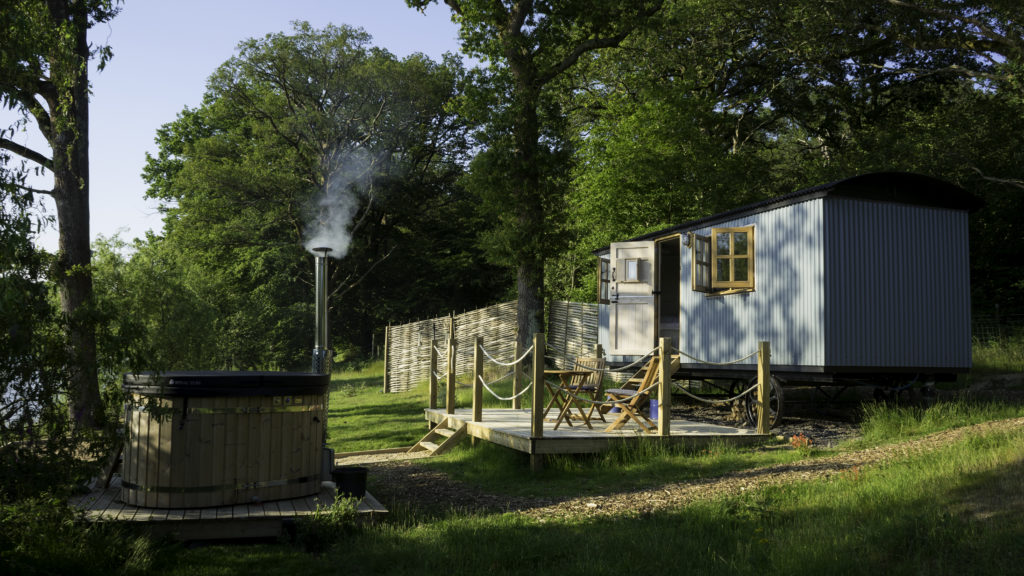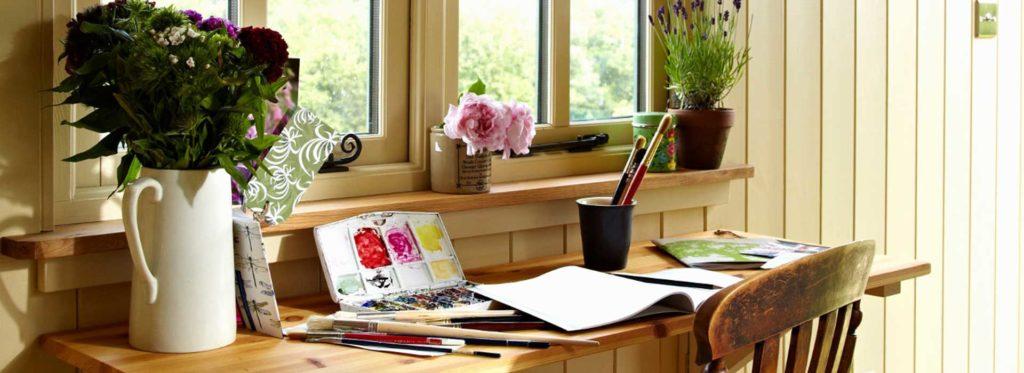From humble beginnings a shepherd’s hut has always provided shelter, originally for the lone shepherd to shelter in during lambing time on the downland of Southern England.
Can you live full time in a shepherd’s hut?
From humble beginnings a shepherd’s hut has always provided shelter, originally for the lone shepherd to shelter in during lambing time on the downland of Southern England.
These days the shepherd’s hut has moved on to the more contemporary, well-appointed ‘house on wheels’ that you see today. All of the huts are insulated with Thermafleece sheep’s wool, lined with vapour barrier and breather membrane and built in a similar way to the houses you might see on Grand Designs. So yes, it is perfectly feasible to be living in a shepherd’s hut full time, and lots do.
Reasons for living in a hut full time
Much as any garden room or annexe in the garden can be used as extra accommodation, so too can a shepherd’s hut. In fact a well designed hut can sit much better in the curtilage of the house than many of the alternatives. ‘It looks like it has always been there’ is a comment we often hear. And that’s a good thing, I think it is so important that additions to the landscape ‘sit well’ and don’t frighten the horses.
There are many reasons why someone may want to live in a shepherd’s hut full time. Grown up children returning home, but wanting some independence is a great example. An elderly relative may move in to be close to family. A carer may like some independence whilst being close at hand, day and night.
Planning
The question of planning permission arises for annexes in the garden. A shepherd’s hut on wheels isn’t a fixed structure, but may need planning permission like any other material change to a property. It may not be required if the person using the shepherd’s hut is still linked to the home, using some facilities in the main dwelling such as dining in the kitchen on occasion, or taking a bath. If the structure were not on wheels, without a chassis as some of our structures now are, and has sleeping facilities then you may well be into planning permission and associated building regulation requirements. Council tax may apply too, as the dwelling is an added burden on the local resources. Best take advice; the Government Planning Portal is a useful website, or your local planning department.
A shepherd’s hut in a remote location is a different story, and would quite rightly require planning permission for the change of use from agricultural to permanent residential. We haven’t done many with full long-term residential use (as opposed to doing lots of holiday lets), but our Cabin shepherd’s hut designs would make for a perfectly liveable space on a small holding or market garden, for example. We did an en-suite Cabin hut with full kitchen for a temporary home whilst a house was being renovated at a busy market garden in the Cotswolds. The lady lived there for eighteen months, and then once building work was completed the hut became a successful holiday let. In the early days we built a 14’ Snug shepherd’s hut for a wonderfully eccentric customer in Somerset, for him to live in on a paddock he owned below a very famous hill. He has since moved, and taken the hut with him, and is probably still drifting to this day.
One memorable hut sits neatly tucked in by a stone barn in a farmyard, replacing a very old mobile home that had seen better days. The owner stayed in the hut on his friend’s farm, had done for years. He knew what he wanted; he had bookshelves designed to fit his bird watching books perfectly, hooks to hang binoculars and other treasures. He is one of the few chaps so far who specified single glazing to his windows rather than our usual double glazed units. He insisted that he must be able to hear the birds singing. He wakes to the dawn chorus. The single bed was built ‘just so’ I remember, and a very high quality mattress was ordered for that one, fit for a king. He even had a thin steel plate fitted on the outside of his stable door at a height that he knew the farm’s Jack Russell would scratch at when he wanted to come in to warm up by the stove.
Full Time Hut Features
I would recommend some form of electric heating in a shepherd’s hut which is to be occupied full time. A towel radiator ticking away in the winter months to keep the pipes from freezing in very cold weather is prudent. And the convenience of one of our oil-filled electric radiators, which has a thermostat, means the hut remains cosy without the need to light the stove every time you return home. We have fitted underfloor heating. I don’t like it as the electric mats have a lifespan of ten years or so, which renders it useless if or when it fails.
Modern tech is a divisive subject when it comes to shepherd’s huts, but for a full time hut I would usually expect to see data cabling, wi-fi and possibly a TV. All of which can be accommodated in clever ways within the hut design, hidden away if necessary.
Clever storage is a big design trick to pull off, and we have built wardrobes, lockers, cupboards and under-bed drawers.
Our kitchen designs range from the most basic with a Belfast sink to fully equipped with hob, oven and fridge. Overhead cupboards with a plate rack create the smart, functional kitchen you would usually expect to see in a conventional home. Our shower room design has the full facilities with lashings of hot water, and we are increasingly including bath tubs too. Upcoming projects even include a dishwasher and a Dyson Supersonic hair dryer!
Is living full time in a shepherd’s hut a realistic option? I did it, next to the lake at home for over three months, from Winter to early Spring. It was whilst our house was being renovated and the roof was off. I had a comfy bed, 240v electrics and a small wood stove. I loved it. Just me, the guitar, Dipper the Labrador and Radio 4. I woke to the dawn chorus too.






